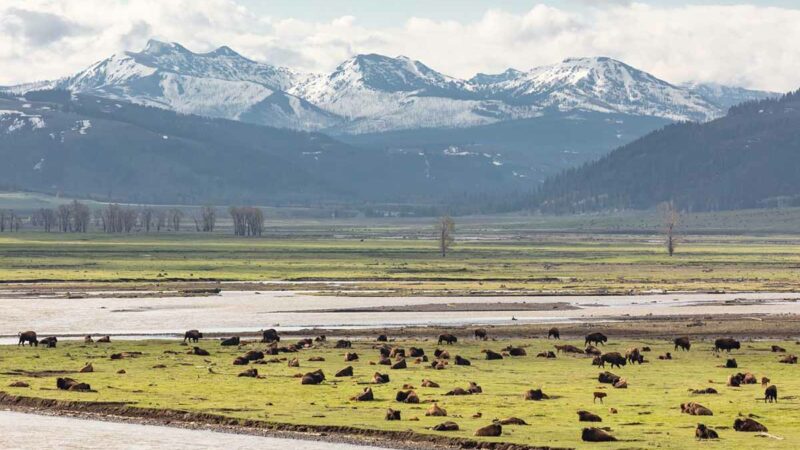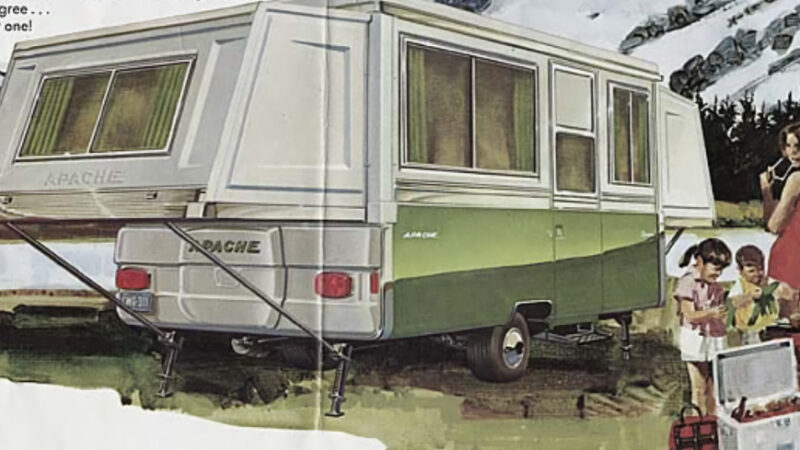The Complete Guide to Full-Time Family RVing
Bryanna here from Crazy Family Adventure! We lived, worked, and traveled full-time in our RV for over 8 years with our family and two dogs. During that time, we learned a few things about full-time family RVing and wanted to pass that knowledge on to you to help you hit the road with your family.
We’ll cover preparing to get on the road, homeschooling, picking your RV, budgeting, memberships, and how to choose the campgrounds you want to stay at.
Our Story
We are a family of 6. Craig and Bryanna are the parents (we are high school sweethearts). Then there is our oldest Carson, the twins Melia and Cannon and our youngest Knox.
We started off having the typical life – Mom stays home with the kids and the husband goes to work. We had a big house (on a 1/2 acre with a swimming pool, swing set, sandbox, big deck) and a LOT of toys and stuff!
We then decided to sell EVERYTHING and move into an RV! This journey has been both exhilarating and challenging. It has also led us to guide others to this lifestyle with tips, tricks, and fun itineraries.
On our site, we share tips for full-time RVing, our top road trip destinations and all about National Parks – one of our favorite places to visit!
P.S. We literally wrote the book on full-time family RVing  Check it out here.
Check it out here.
How to Prepare for Full-Time RV Living With Kids
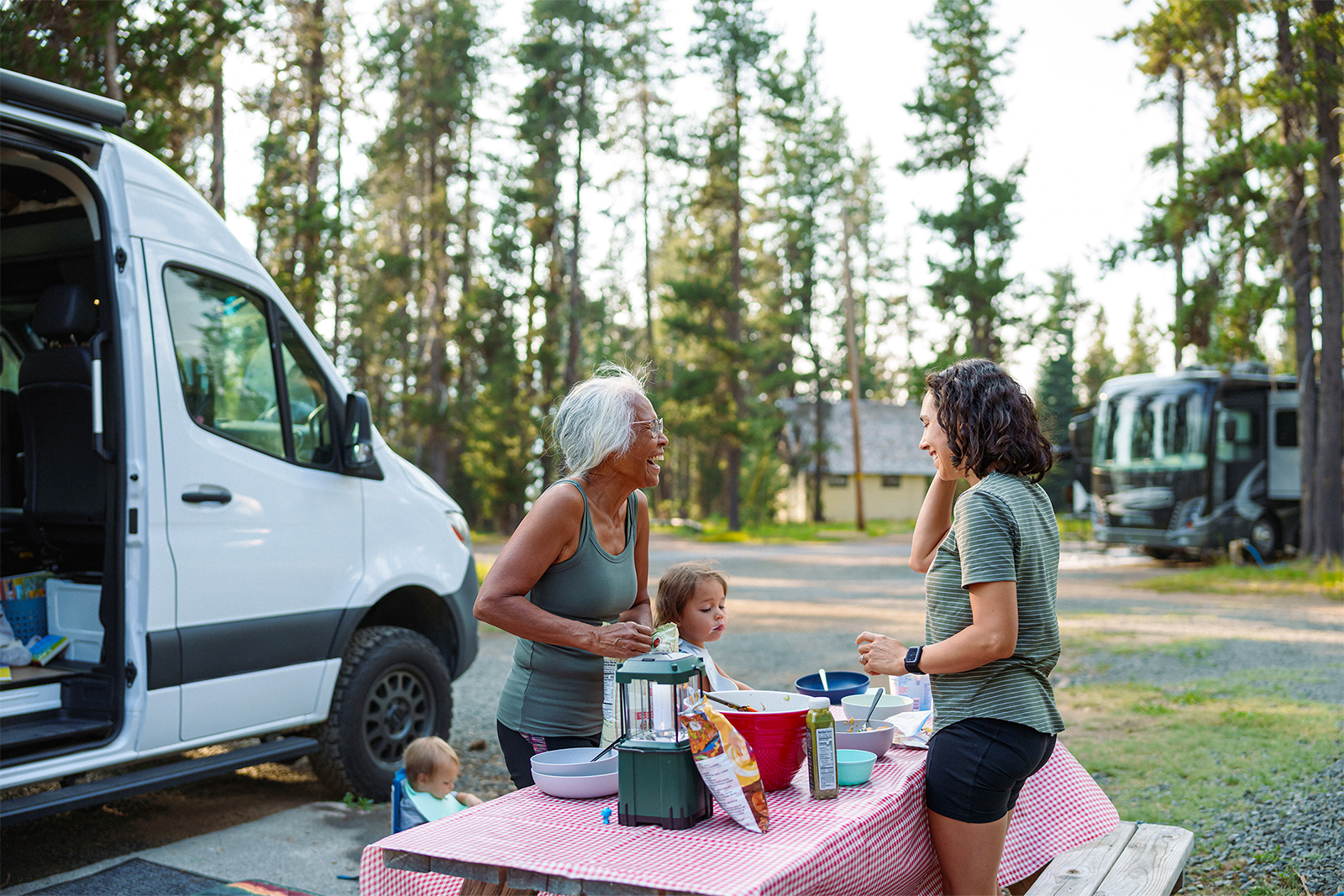
Image source: Getty Images
Preparing to take your family on the road includes a lot of internal reflection on whether this is the right choice for you and your family. We never had a moment where we were 100% sure it was the right choice. But what we did know was we wanted to go for it. We didn’t want to look back and have regrets.
Once we knew we were going to become a full-time RVing family, it was time to start preparing to hit the road. It isn’t easy to take a 2700 square foot house filled with years of things and downsize it to fit into an RV. But it is possible!
Getting Started
Getting ready to hit the road is not for the faint of heart! It takes a lot of effort, decisions and time to downsize all of your possessions to fit into an RV. But it is a very freeing feeling and well worth it!
Our best advice when downsizing is to just get started, take one room at a time and just keep moving forward. Also, plan on going through multiple phases to downsize.
- Phase 1 – Will be easy. This is when you get rid of all of the things you have wanted to get rid of but haven’t yet.
- Phase 2 – This one will be harder because you have to start making some tough decisions about what you really need.
- Phase 3 – You might shed a few tears during this phase when you have to let go of things that you have never considered letting go of.
But in the end, it is all worth it and feels very freeing to downsize your possessions so you can spend more time focusing on your family and adventuring!
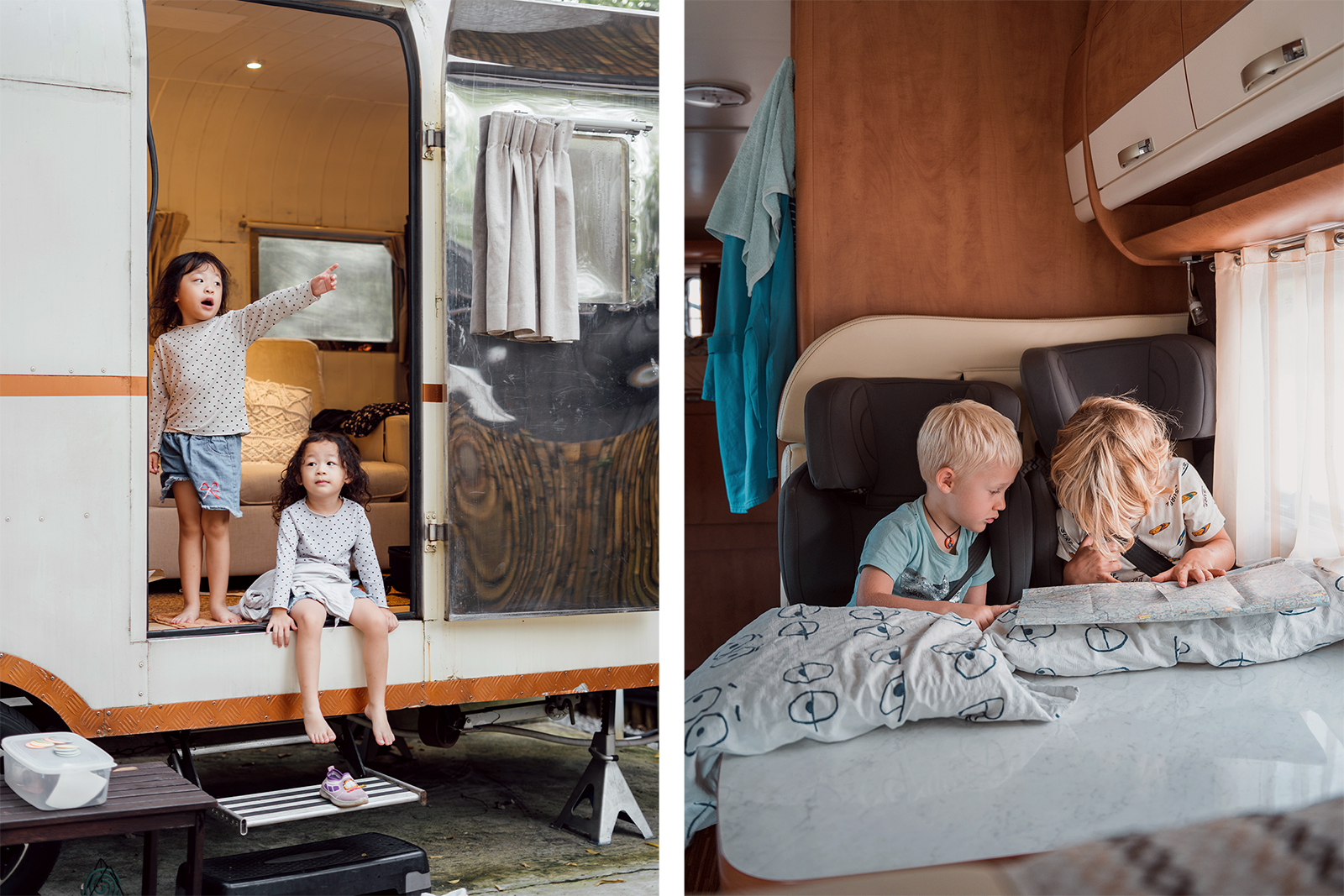
Image source: Getty Images
Homeschooling and Roadschooling Options
If you plan to full-time RV with school-age kids, you will need to explore homeschooling options. The good thing is that there are numerous options available.
One of the joys of going on the road full-time with your kids is that you get to be part of their learning. You won’t be sending them off for 8 hours a day to be taught by someone else. Instead, you will be there every step of the way.
I love that this helps you to learn more about your kid, how they learn, what they love and what they are into. It also allows you to give the time and energy to the things they are passionate about – not just what the school system says they can do!
Our Choice: Unschooling!
When it comes to how you want to homeschool on the road, you will have to do your own research on what will work for your family. Almost every family we met did things differently, and there was no universal theme for homeschooling.
We chose to unschool our kids, which worked well for us. Other options include online schools like Power Homeschool or Acellus. You can also look to buy a curriculum. This in itself can be a whole blog post, but it is also a very personal decision that will take research and trial and error to determine what will work for you and your family.
The nice thing about it being your choice means you can change your mind! If halfway through the year, what you are doing doesn’t feel right for you or your kids, you can change it.
Legal Considerations for Homeschooling
The first step is to look into the rules for your state. If you plan to change your domicile (the state you “live” in), make sure you understand the homeschool rules for that state.
We never changed our domicile while on the road and stayed with the state of Wisconsin. For Wisconsin, we simply need to fill out a form each year, stating that we will be homeschooling our children, their grades, and our commitment to providing them with the required yearly hours of school time.
Here is a great place to find the rules for each state.
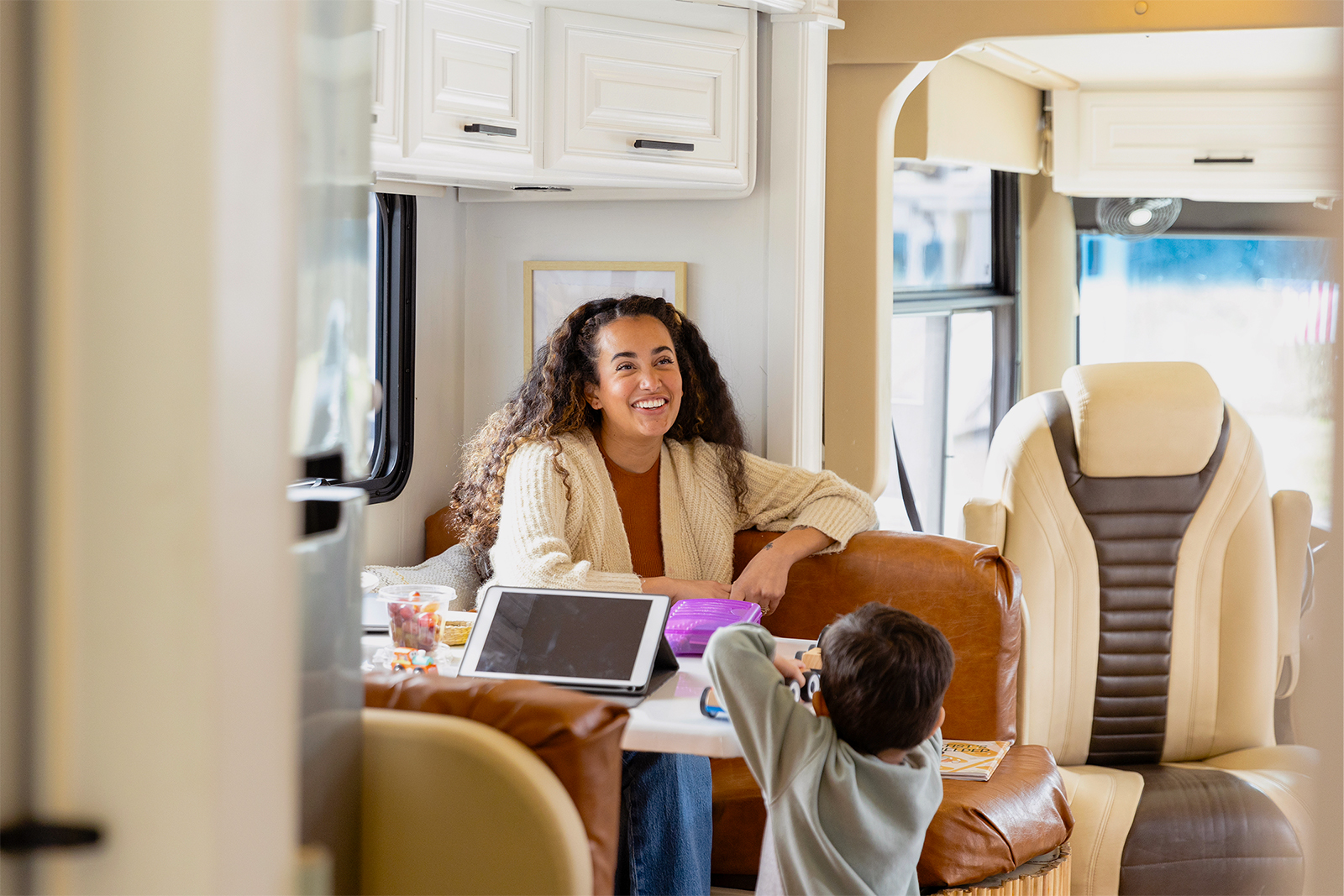
Image source: Getty Images
Handling Healthcare for Full-Time Families
Having health insurance while on the road was important to us, especially with four little kids. You never know what is going to happen! Luckily, when we first got on the road, my husband was working his 9 to 5 job remotely and still had insurance.
Once we became self-employed, we had to look for other options and chose healthcare.gov. We have used this option for years and still do! Just be sure you have an option that offers emergency care across the US, not just in your home state.
Here are a few other options you could look into:
- Self-Employed Group Plans
- Telemedicine
- Health Sharing programs like MediShare
- Supplemental Fixed Indemnity Plan
Doctor’s Visits
With little kids, we were bound to end up at the doctor and dentist at some point on the road. This presents challenges since you can’t just call your pediatrician from your hometown. Instead, you will have to find a doctor locally or go to urgent care. We had to do this multiple times, including unexpected dental visits, but it always worked out.
It just took more effort to find the doctor, explain our background and history when needed, etc. However, it is doable. I would recommend always requesting a printout of any tests or X-rays they perform so you can have these at the ready for your next doctor.
We also scheduled our yearly well visits in our hometown, ensuring the kids were all up to date on their visits. We would sometimes spread these out to 18 months instead of 12 months, but we always made sure to see their primary pediatrician when we returned to our hometown.
Like most things about living this unconventional life, you will be able to figure out how to make it work – it just takes more work to make it happen!
Staying Connected: Internet Solutions for Families
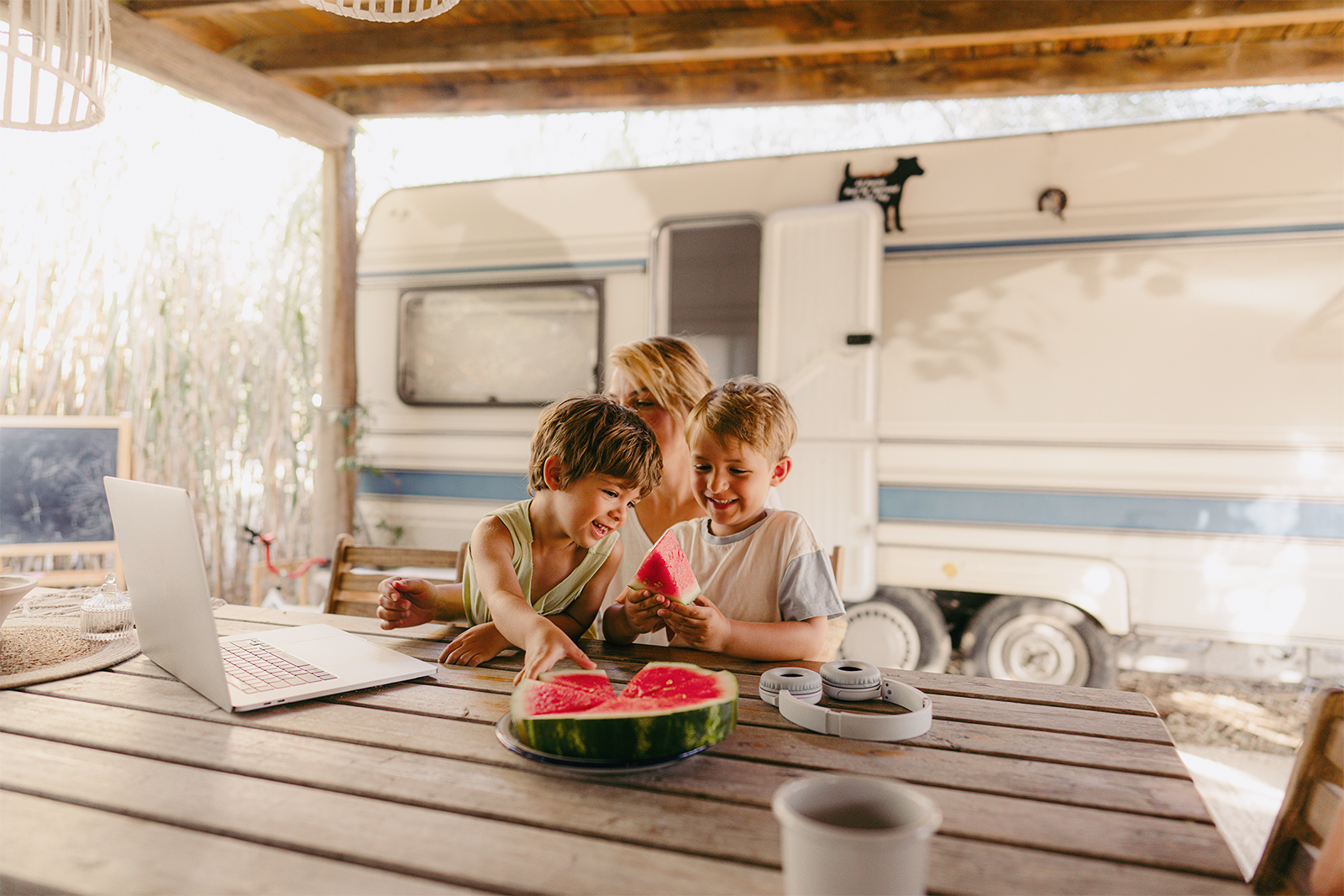
Image source: Getty Images
Having internet was essential for us since we worked remotely. Additionally, we have kids who enjoy being online, so we needed a substantial amount of data. We were lucky enough when we hit the road to get a grandfathered-in Verizon unlimited plan. We had a hot spot, and it worked well for us all around the US.
Unlimited plans like that are hard to come by these days – but cellular hot spots can still work well.
Starklink is one of the best internet options for RVers these days, offering high-speed coverage almost anywhere you roam. Just be sure to place the dish away from tree coverage (a long cable is provided). Starlink doesn’t work well when trees block the signal. We learned that when we RV’d to Alaska and ended up in campgrounds with a lot of trees!
Outside of that, when it comes to Internet solutions, your best all-in-one resource for information is the Mobile Internet Resource Center.
The Best Types of RVs for Full-Time Family Living
Picking an RV you are going to live in is very different from picking an RV you are going to use on the weekends or take out a couple of trips a year!
Over our 8 years on the road, we had five different RVs:
- 29-foot Class A Motorhome
- 23-foot Class B
- 21-foot Travel Trailer
- 30-foot Travel Trailer
- 36-foot 5th Wheel
When it comes to picking the best RV for full-time family living, there are a few things you should consider:
1 – How fast will you be moving?
Are you planning to stay in one spot for several weeks or even months? Or will you be on the move, spending just 3–5 nights in each location?
If you’ll be staying in one place for extended periods, a larger rig might be a better choice. The extra space can make a significant difference, allowing you to settle in and enjoy a setup that feels more like a cozy, compact apartment.
On the other hand, if you’ll be traveling frequently or using your RV just for vacations, a smaller rig with a more straightforward setup and fewer components might be more practical and easier to manage.
2 – What season will you travel in?
Do you plan to travel only in warm weather? If so, you could consider a smaller RV, as you will be spending more time outside. If not, you will want a larger RV with more interior living space.
3 – Where will you stay?
Do you plan to stay at RV resorts, where the size of your rig doesn’t matter? Or do you want to visit more off-the-beaten-path places, such as national parks, state parks, boondocking, etc., where it can be more complicated to get in with a bigger rig?
4 – Work/homeschooling schedule.
Will someone in the family be working a 9 to 5 and need a quiet space? Will your kids be doing an online-based homeschool curriculum and need room to sit and work on the computer? These are things to consider when thinking about which rig makes the most sense for your family.
When it comes to must-have features, that is 100% a family’s choice, as each family can be so different in what they “need” to have. For us, when we bought our 5th Full-time RVing rig for our family of 6, we wanted:
- A big fridge
- Plenty of cargo capacity (4000+ lbs)
- A kids’ room area
- Kids’ beds.
RV Floorplans Ideal For Families
In our opinion, there is not one ideal RV floorplan for full-time RVing with kids. Instead, there are ideal floor plans for each family depending on their situation and travel plans. We have had a 39-foot motorhome, a 21-foot travel trailer and a 37-foot 5th wheel.
The best approach is to take your time walking through different RV floor plans, considering the above questions, and selecting an RV that meets the needs of how your family plans to live full-time in their RV.
Here is an article we wrote with all the details on picking the right RV for your family for full-time RVing.
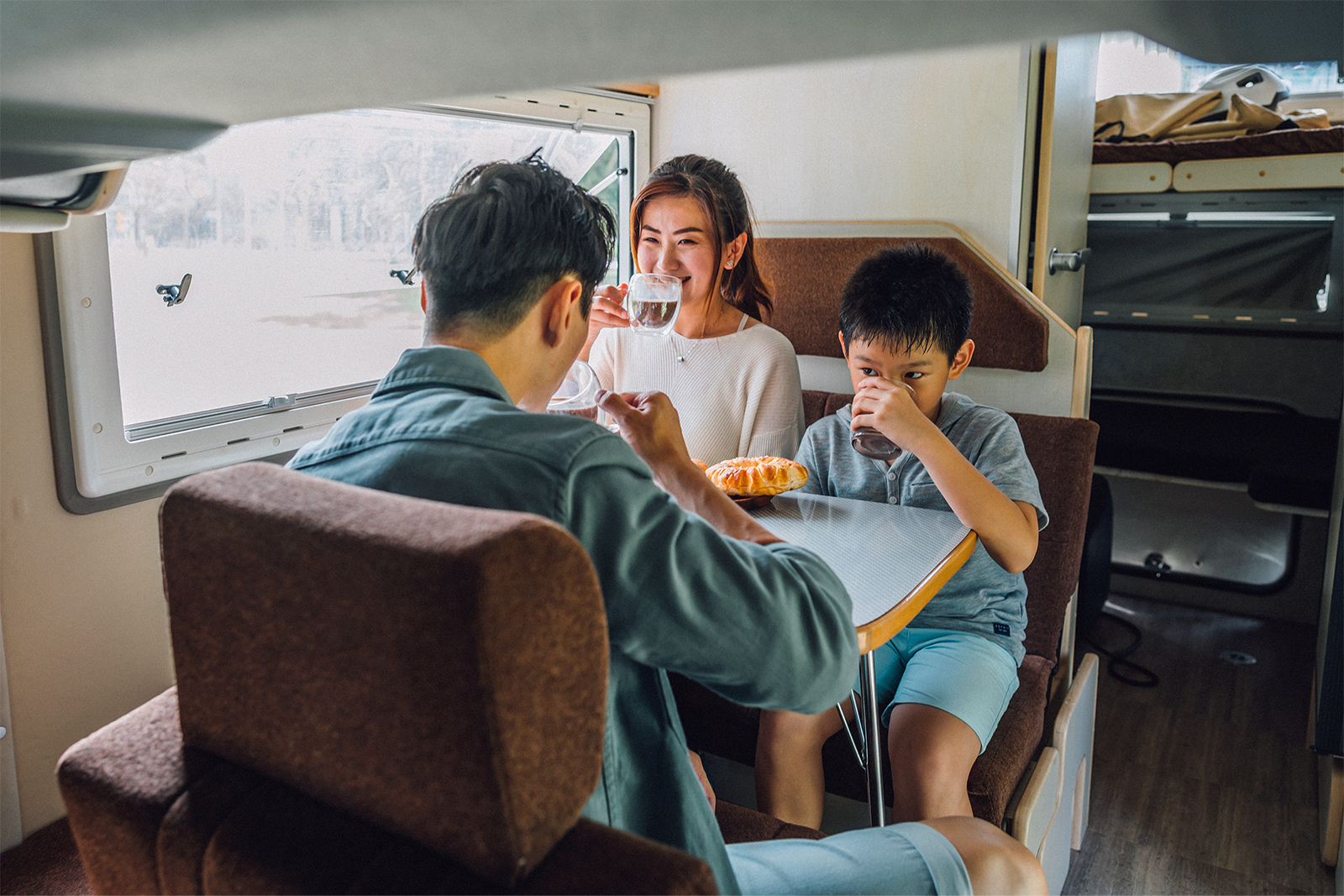
image source: Getty Images
Budgeting for Full-Time Family RV Life
We often get questions about the cost of full-time family RVing. Like so many things in this lifestyle, it depends. We have met people with unlimited budgets who treat each stop on their travels like a vacation. We have also met families that are very budget-conscious and only look for free things to do while traveling.
You will also have to pay for internet, cell phones, insurance, food, activities, etc. – all the basic things you do while living in a house that aren’t related to owning a home. All of these options can be priced differently based on your budget.
Full-time RV living is not automatically a cheaper way of life unless you are good at budgeting and can avoid the desire to go out and try new restaurants, breweries, and things to do at the locations you visit!
This article gives the full play-by-play of how we managed our full-time RVing budget.
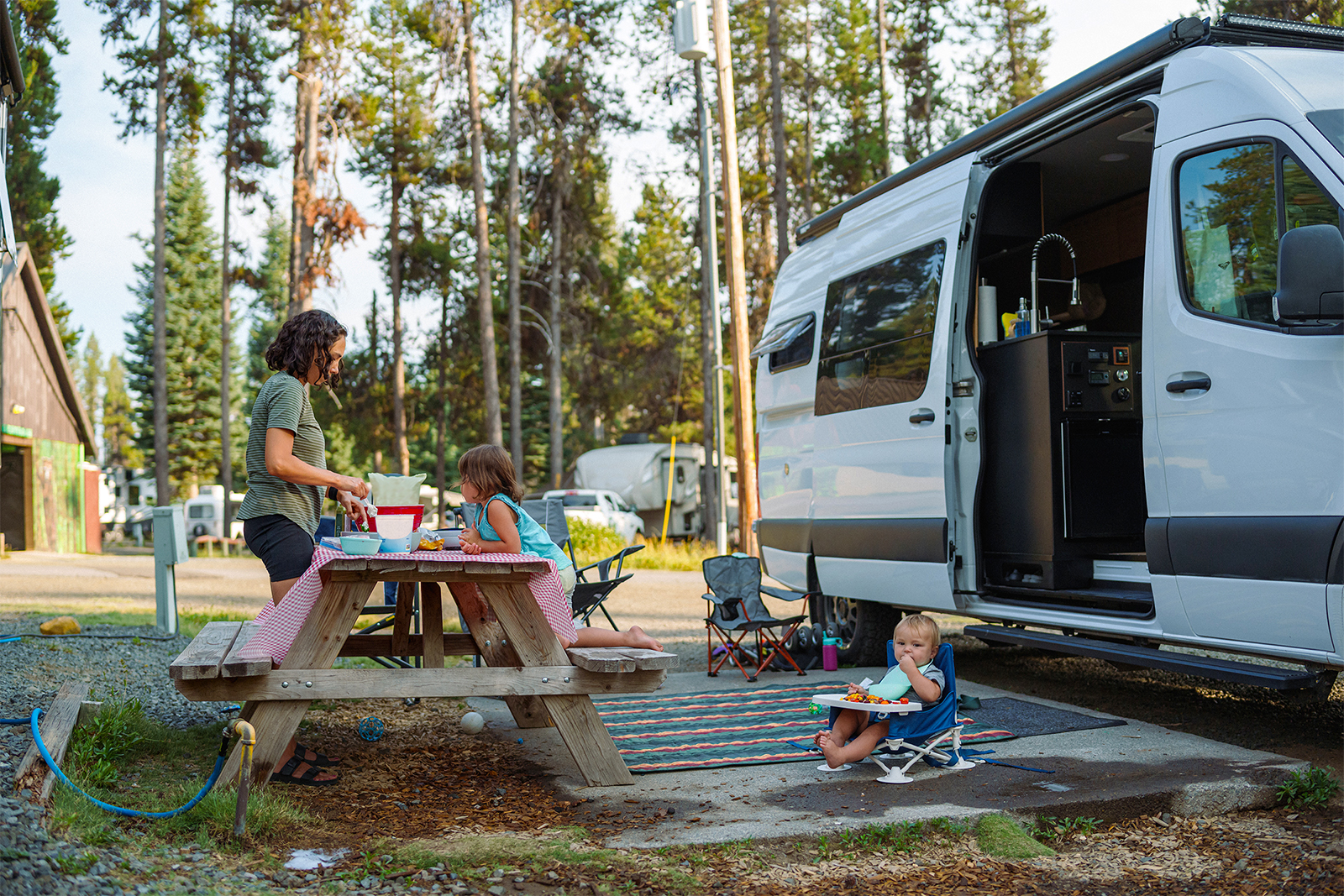
Image source: Getty Images
Choosing the Right Campgrounds and RV Parks for Families
While living on the road, you are going to have to pick where you stay every night of the year! That is a lot of decision-making. Here’s what to consider:
Are you looking for an RV park that is close to what you want to do in the area, and you don’t plan to be in the RV park much?
- In this situation, your choice won’t be based on amenities and things to do, but instead on location. On multiple occasions over the years, we have stayed in RV parks that were little more than parking lots with no amenities. But they got us super close to the things we wanted to do, so it worked out well!
Are you looking for a place to stay for a couple of weeks and relax?
- If this is the case, you will want to look for amenities that your family enjoys, such as a pool for swimming, a playground, a fishing pond, or open grass for the kids to run around. Thousand Trails parks are generally good for this, and you will most likely run into other families as well!
Are you looking to splurge on a vacation spot?
- In this case, you will want to look for RV resorts that offer many amenities and fun things to do, but come with a higher price tag.
Are you looking to get out in nature, away from all the amenities, internet, etc?
- State Parks and National Parks are good options, or consider boondocking! Any chance we get, we stay in a State or National Park. We loved the vibe at these parks and enjoyed being there. However, note that they are usually not full hookups, and internet coverage can be spotty.
- Boondocking isn’t easy everywhere in the country. But when we got out west, we always looked for boondocking opportunities. We stayed in some pretty epic places for free!! If you want to learn more about this, check out our post: How To Camp For Free Or Close To It In The US.
Picking the best RV campground or park for your family comes down to what you want to do when you are staying there. No matter what, you should always check to ensure kids are allowed—some campgrounds do not.
Click here to check out 15 of our favorite campsites!
Camping Memberships
Various camping membership sites offer savings on nightly rates. We belong to:
- Fulltime Families – all about families traveling full-time in their RV. Lots of great resources, rallies and savings info!
- Thousand Trails – as mentioned above. Great for inexpensive camping (once you buy the membership) and for meeting other full-time traveling families.
- Good Sam offers discounts on thousands of campgrounds nationwide, fuel savings, deals on camping gear, and much more.
- Overnight Stays is another Good Sam offering that features free single-night RV stays at unique locations.
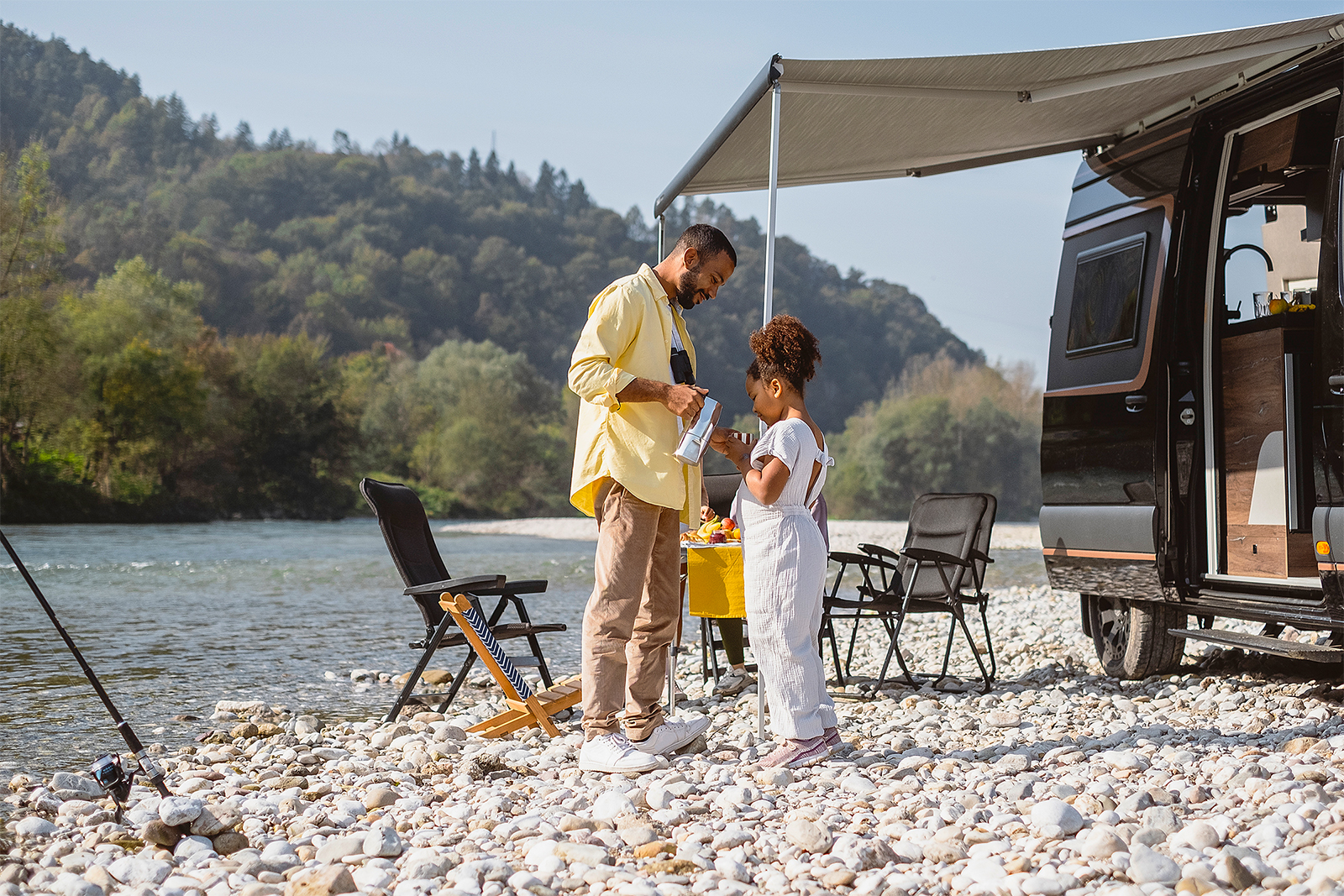
Image source: Getty Images
Pros and Cons of Full-Time RV Living With a Family
There are so many amazing things about full-time RV living with a family, but there are downsides too.
What we love:
The freedom
We have the freedom to come and go as we please. If there’s somewhere we want to go, we schedule it and go.
Community
There is a great community of people who travel full-time, and it’s great to connect with so many like-minded individuals!
Minimalism
It’s a great feeling to have fewer things. Fewer things mean less to worry about and less to take care of. It’s liberating!
Family
There is nothing like loading the family up in the RV and taking off on our adventure. We all get to know each other so much better, spend more time together, and explore this amazing country!
What We Don’t Love:
Leaving Family And Friends
This is always challenging and something we dislike about this lifestyle.
Not Having Your Own Yard
This is a good thing since you don’t have to maintain or clean it. But it’s a bad thing because the kids can’t dig a hole in the campground “yard”. Since it isn’t your space, you are always following someone else’s rules when you stay at campgrounds.

Image source: Getty Images
FAQ: Full-Time Family RVing
Q: Is full-time RV living legal for families with kids?
A: Yes, it’s legal. You must comply with homeschooling laws, residency requirements, and health/insurance regulations.
Q: How much does it cost to live in an RV full time with a family?
A: On average, between $2,000–$10,000 per month depending on travel frequency, campground choices, fuel, family size, and travel style.
Q: What is the best RV for full-time family living?
A: Large fifth wheels, bunkhouse travel trailers, and Class A motorhomes with bunk beds are among the most popular but I would not say the best. The best RV depends on how you want to travel. One of my favorite setups for us was a 12 passenger van with a 21 foot travel trailer that we took down to Baja, Mexico.
Q: How do kids go to school while full-time RVing?
A: Most families homeschool, roadschool, or use online public school programs.
Q: Is RV living safe for children?
A: Yes, with proper RV maintenance, safety planning, and supervision. Many RVs have safety features designed for families.
Q: How do families make money while RVing full-time?
A: Remote jobs, freelance work, seasonal employment, YouTube/blogging, and online businesses are common.
Q: Can you still have a social life while full-time RVing with kids?
A: Absolutely. Many families join full-time RV communities, attend rallies, and connect via social media or travel networks.
Top RVs for Full-Time Families
Here are some of the best RVs commonly chosen by full-time RVing families:
- Grand Design Reflection 311BHS – Bunkhouse fifth wheel with spacious living area and separate kids’ room
- Jayco Jay Flight 32BHDS – Travel trailer with double slide-outs and outdoor kitchen
- Keystone Montana High Country 385BR – Fifth wheel with a mid-bunk room and loft space
- Forest River Georgetown 5 Series GT5 36B5 – Class A motorhome with bunk beds and two bathrooms
- Winnebago Minnie Winnie 31H – Class C with bunk beds and a family-friendly layout
Closing Thoughts
In conclusion, we 100% think taking your family on the road to travel full-time is worth it. It is not all rainbows and sunshine, and it will have its challenges, but it is worth it!
Before going on the road, you will never have all your ducks in a row and be prepared for every situation. But that is all part of the adventure of going on the road full-time with your family. You learn how to figure things out and how to get through situations together as a family.
If this is a dream you have, go for it! You will figure everything out along the way!
The post The Complete Guide to Full-Time Family RVing appeared first on RV.com.
Source: https://www.rv.com/rv/complete-guide-to-full-time-family-rving/







